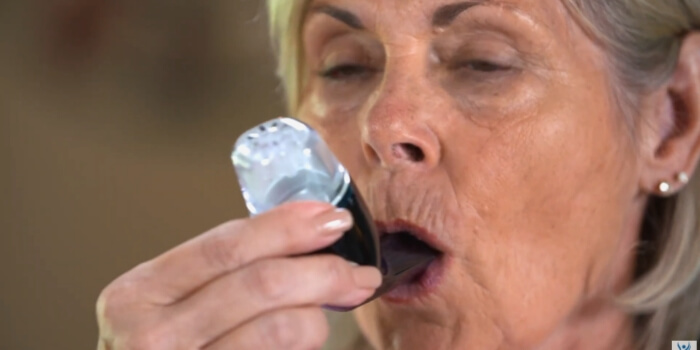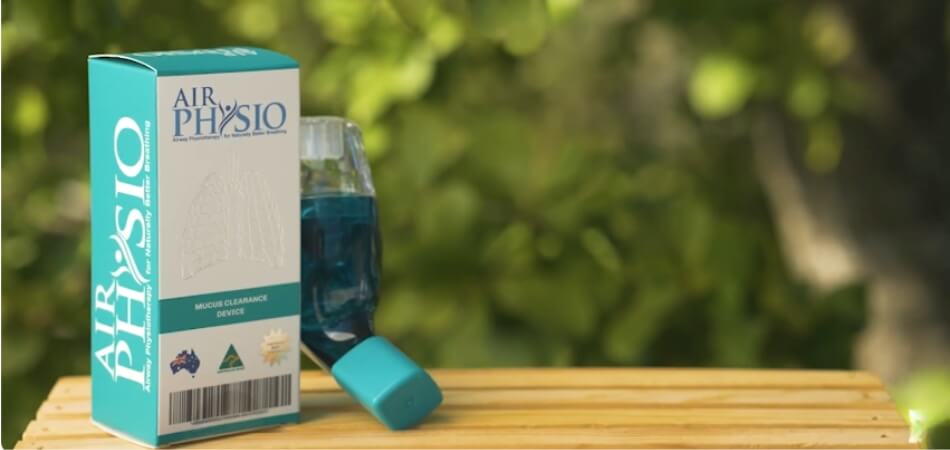Wheezing or struggling to breathe is phenomenal for asthma patients. Asthma can be a hassle, can't it? I remember the first time I was handed an inhaler—it felt like a lifeline. But let's be real, are we using it correctly? That's another story.
Now, let's talk about inhalers and asthma. These handy handheld devices are godsend for respiratory patients. They deliver medication straight to our lungs, helping us breathe easier. But here's the kicker: If you're not using your inhaler right, you might as well breathe air.
How do I know if I am using my inhaler correctly? Great question! It's all about technique and observation.
First, ensure you're shaking that inhaler, sealing your lips around the mouthpiece, and inhaling deeply. Keep an eye out for key indicators like feeling the medication in your mouth or throat.
Still unsure? Don't sweat it. Get in touch with your healthcare provider or pharmacist for expert guidance.
Curious about more? Let's dive deeper into inhalers and asthma together. Keep reading to become an inhaler pro in no time!
What is An Asthma Inhaler?
Wondering what that small, handy device asthmatics always seem to carry around is? Well, let me introduce you to the asthma inhaler – a true lifesaver in a tiny package. It's like having a magic wand that can whisk away those pesky breathing troubles in an instant.

So, what exactly is an asthma inhaler? It's basically a device that delivers medication directly into your lungs. Think of it as a targeted treatment, resetting in on the source of your respiratory woes.
Whether it's a reliever inhaler that opens up your airways in a pinch or a preventer inhaler that keeps those symptoms at bay in the long run, these little gadgets work wonders.
Now, let's talk about Airphysio. Using innovative products, Airphysio helps you breathe better. While it's not exactly an inhaler, it's worth mentioning for its role in respiratory care.
With Airphysio, you can expect a fresh take on clearing out your airways, offering a complementary approach to traditional inhalers.
In short, an asthma inhaler is like a superhero for your lungs, and with options like Airphysio on the scene, breathing easily has never been more accessible.
Different Types of Asthma Inhalers
Alright, let's dive into the world of asthma inhalers! These nifty little devices come in different shapes and sizes, each serving a specific purpose in managing asthma symptoms.
So, let's break it down and explore the types of asthma inhalers you might encounter.
Reliever Inhalers
Ah, the trusty reliever inhaler, also known as a rescue inhaler. This one's your go-to when you're in the midst of an asthma attack and need quick relief.
It works by relaxing the muscles around your airways, making it easier to breathe within minutes. You'll typically find short-acting beta-agonists (SABAs) like albuterol in these inhalers.
Preventer Inhalers
Now, onto the preventer inhalers, also called controller or maintenance inhalers. These bad boys are all about keeping asthma symptoms at bay over the long haul.
They work by reducing inflammation in your airways, making you less likely to have flare-ups. You'll usually find corticosteroids or other anti-inflammatory medications in these inhalers.
Combination Inhalers
As the name suggests, combination inhalers pack a double punch by combining both reliever and preventer medications in one handy device.
This means you get quick relief from symptoms while also keeping them under control in the long term. It's like having the best of both worlds in a single inhaler.
Dry Powder Inhalers (DPIs) vs. Metered-Dose Inhalers (MDIs)
Let's talk about how these medications are delivered. DPIs deliver medication in the form of a dry powder, while MDIs release a measured dose of medication in aerosol form. Both types have their pros and cons, so it's essential to find the one that works best for you.
With these different types of asthma inhalers at your disposal, managing your symptoms becomes a lot easier. Just remember to chat with your healthcare provider to figure out which inhaler suits your needs best.
What is the Right Way of Using an Asthma Inhaler?
Alright, let's talk about the right way to use an asthma inhaler. Trust me, it's not just about giving it a quick puff and hoping for a positive outcome. There's a technique involved to ensure you're getting the most out of your medication. So, let's break it down step by step:
Step 1: Proper Technique
First things first, nail down the proper technique. This includes shaking the inhaler, exhaling fully to clear your lungs, and sealing your lips around the mouthpiece to create a secure seal. When you're ready, take a slow, deep breath to inhale the medication into your lungs.
Step 2: Key Indicators
Keep an eye out for some key indicators that you're using your inhaler correctly. You should see a medication spray in the air when you press on the inhaler.
You might also feel the medication in your mouth or throat, which is a positive sign that it's getting to where it needs to be. And don't forget to hold your breath for about 10 seconds after inhaling to give the medication time to do its job.
Step 3: Consistency
Lastly, it's essential to be consistent with your inhaler use. Make sure to follow the instructions provided by your healthcare provider or pharmacist to ensure you're getting the right dose at the right time.
By following these steps, you can feel confident that you're using your asthma inhaler the right way. You can also get the relief you need when you need it.
How Do I Know If I Am Using My Inhaler Correctly?
Alright, let's tackle the age-old question: “How do I know if I am using my inhaler correctly?” It's a valid concern because, let's face it, using an inhaler might seem straightforward, but there's a bit of finesse involved.

Don't worry, though; I've got your back. Let's break it down step by step and figure out if you're getting the most out of your inhaler:
Technique Check
First things first, let's make sure you've got the technique down pat. This involves a few key steps, like shaking the inhaler, exhaling fully to clear your lungs, and sealing your lips around the mouthpiece before inhaling deeply.
It's all about creating a good seal and ensuring the medication reaches your lungs where it's needed most.
Observation
Next up, let's talk about what you should be looking out for when using your inhaler. Keep an eye out for key indicators like seeing a spray of medication into the air when you press down on the inhaler.
You might also feel the medication in your mouth or throat, which is a good sign that it's making its way to where it needs to be. Remember to hold your breath for about 10 seconds after inhaling to give the medication time to work its magic.
Consistency Check
Lastly, it's essential to be consistent with your inhaler use. Make sure you're following the instructions provided by your healthcare provider or pharmacist to ensure you're getting the right dose at the right time. Consistency is key when it comes to managing your asthma symptoms effectively.
Now, if you're still unsure whether you're using your inhaler correctly, don't hesitate to reach out to your healthcare provider or pharmacist for some expert guidance.
They can provide personalized advice and tips to help you get the most out of your medication. Remember, managing asthma is all about finding what works best for you, so don't be afraid to ask for help along the way.
Finally, figuring out if you're using your inhaler correctly boils down to mastering the technique, observing key indicators, and staying consistent with your usage. With a little practice and guidance, you'll be breathing easier in no time.
Tips for Using Inhalers in the Right Method
Alright, let's talk about some tips for using inhalers the right way. Mastering the proper technique can make all the difference in managing your asthma symptoms effectively.

So, here are some handy pointers to keep in mind:
- Shake Well: Always remember to give your inhaler a good shake before using it. This helps ensure that the medication is properly mixed and ready for inhalation.
- Exhale Completely: Before taking a puff from your inhaler, make sure to exhale fully to clear your lungs. This allows for better absorption of the medication when you inhale.
- Seal Your Lips: When using your inhaler, create a tight seal around the mouthpiece with your lips. This helps ensure that the medication goes directly into your lungs where it's needed most.
- Inhale Slowly and Deeply: Take a slow, deep breath when inhaling from your inhaler. This allows the medication to penetrate deep into your airways for maximum effectiveness.
- Hold Your Breath: After inhaling the medication, hold your breath for about 10 seconds to allow it to settle in your lungs before exhaling.
By following these tips, you can ensure that you're using your inhaler in the right method and getting the relief you need from your asthma symptoms.
It takes practice to become proficient, so if you are unsure, don't be afraid to ask for guidance from your healthcare provider.
FAQs
Alright, let's address some common questions about using inhalers and managing asthma. Here's what you need to know:
1. What are Common Mistakes When Using an Inhaler?
Breathing Errors: It's crucial to get the breathing right when using your inhaler. Common mistakes include breathing in too forcefully or not forcefully enough, as well as not breathing in deeply. Another mistake is failing to coordinate your breathing before releasing the medication.
2. Can Asthma Go Away?
Unfortunately, asthma doesn't just disappear. It's a chronic condition that requires ongoing management. While some people may experience periods of remission, asthma typically persists throughout life and requires regular treatment to keep symptoms under control.
3. How Do I Know if I am Using My Inhaler Correctly?
- Consistency Check: Ensure you're using your inhaler consistently by following the instructions provided by your healthcare provider or pharmacist.
- Observation: Watch out for key indicators like seeing the spray of medication and feeling it in your mouth or throat after inhaling. Don't forget to hold your breath for about 10 seconds.
4. Are There Any Long-term Effects of Using an Inhaler?
In general, inhalers are considered safe when used as prescribed. However, using reliever inhalers too frequently can indicate poorly controlled asthma, which may lead to long-term complications such as lung damage or increased risk of asthma attacks.
Bottom Line
So there you have it! When it comes to using your inhaler correctly, it's all about mastering technique, observing key indicators, and staying consistent with your usage.
Ensure you shake your inhaler, create a tight seal around the mouthpiece, and inhale deeply for maximum effectiveness. Keep an eye out for the medication spray and feel it in your mouth or throat after inhaling. And hold your breath for 10 seconds.
If you follow these tips, you can breathe easier and manage your asthma more effectively, no matter where your travels take you. How do I know if I am using my inhaler correctly? Well, now you do! Happy Applying!






